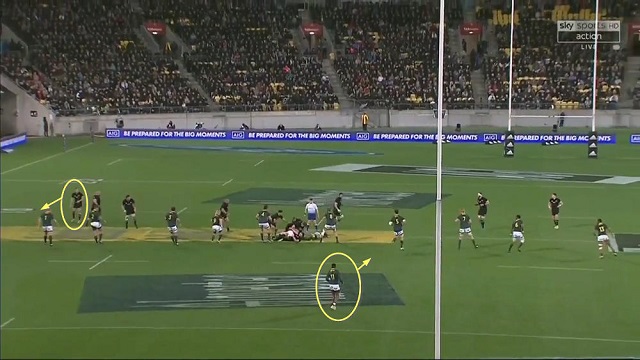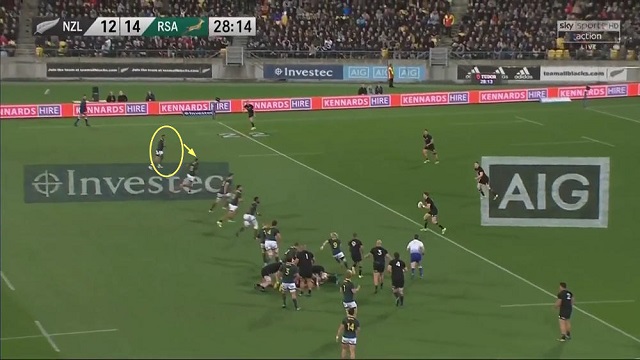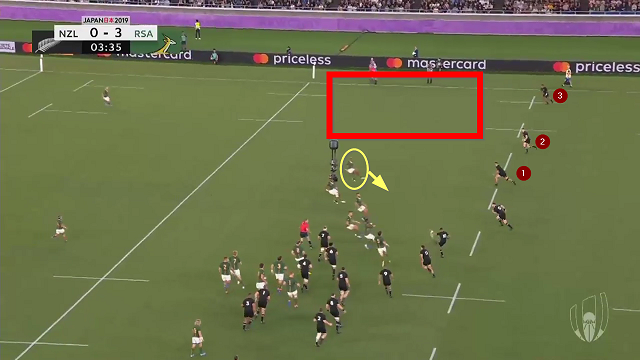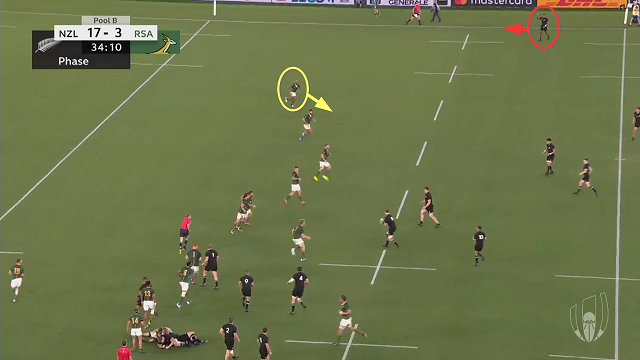World Cup round one: All Black tournament preparation for the Boks
Preparation for opposing teams on a one-off basis is relatively easy. You can bring all of your observations about their strength and weaknesses to bear immediately, and with full force.
The process of preparing for teams you play regularly, or those you are playing in a series of matches or in a tournament, can be far more complicated. In those situations, you may not want to put the cards in your hand om the table all at once, but keep some secrets up your sleeve.
New Zealand were placed in precisely this position when they found themselves jostling shoulder to shoulder with their arch-rivals South Africa at the group stage of the current World Cup in Japan.
The All Blacks already play the Springboks twice per year in The Rugby Championship, and the players and coaches from both countries know each other inside out from their frequent encounters in the tier of Super Rugby below Test match competition. The novelty factor of the unknown from the amateur era is long gone, a thing of the past.
The World Cup only intensifies the need to hold back some trump cards, as surprises for the matches where they are truly needed.
Elite sporting teams will often tend to work in ‘cycles of preparation’ against opponents they play with higher-than-average regularity. They will emphasize one or two areas of attack for the first encounter, then change up to a couple of different aspects for a return, or series match soon afterwards.
All those areas will form part of their pool of research, but the emphasis shifts from game to game. In this way, the opponent is always left reacting to a game-plan which is already in the past, one step behind.
This is the strategy I believe the New Zealand coaching staff adopted for their recent World Cup group game against South Africa. They picked on a weakness which had largely been left dormant since the 2018 Rugby Championship match at the Westpac stadium in Wellington, a game the Springboks won in a nail-biting finish, by 36 points to 34.
In that match at the ‘Cake Tin’, the All Blacks made a point of targeting the left edge of the South African defence, and in particular left wing Aphiwe Dyantyi. Dyantyi was in first season of top tier professional rugby and inexperienced in the aggressive blitz system the Springboks like to run.
As early as the third minute, the All Blacks discovered that Dyantyi could be persuaded to jam in hard and recklessly off his wing:
In the 15th minute, they ran a simple move from lineout to exploit his lack of positional awareness, bringing the ball into midfield on 1st phase before moving it back to the near side on the next play:
From his post at acting full-back Dyantyi has not noticed Ben Smith ghosting back to his original spot on the All Black right, where he is mismatched against two Springbok front rowers:

During the game, Dyantyi habitually defended inside the 15m line, while looking in towards the passer, and this gave the All Blacks a big potential target for the cross-kick:

Now wind the clock on one calendar year to Yokohama, and we find the All Blacks looking to exploit a very similar picture with Dyantyi’s replacement, Makazole Mapimpi. Like Dyantyi, Mapimpi is in his first season of international rugby:


On first phase lineout in the 4th minute, Mapimpi is defending on the far post with no less than three All Blacks attackers outside him. In phase play, Kiwi right wing Sevu Reece has kept his width on the far side-line and is already calling for the ball to be delivered into the space.
The quickest and most direct method of getting the ball into that vacant area is via the kick-pass, and this is the method New Zealand number 10 Richie Mo’unga chose to create the first try for New Zealand in the 23rd minute of the game:
The delivery is far from perfect, but it gives Reece just enough room and time to beat his opposite number and break the line. He quickly finds Aaron Smith and Ardie Savea up in support to confirm the line-bust. New Zealand scored their first try of the match on the other side of the field on the very next play.
Mo’unga was even willing to chance his arm deep in his own end on the kick across to Reece’s side:
It is also worth observing that Mo’unga is not kicking across the full width of the pitch on either occasion – hence ‘kick-pass’ rather than ‘cross-kick’. In both instances he ‘passing’ the ball via his right foot from a position on the same side of the field as the intended receiver.
The build-up to New Zealand’s second score was also heavily influenced by their ability to exploit the sensitive defensive space outside Mapimpi’s left shoulder:
In this example, Beauden Barrett delivers the ball into the space by hand rather than via the foot, but the theme (and Barrett’s position) is a familiar one by now. Savea draws a penalty for the high tackle by Eben Etzebeth, and from the resultant position New Zealand scored their second try less than half a minute later.
The game as a whole sent a clear message about the nature of preparation against very familiar opponents. Create a pool of research about opposition tendencies, and their strengths and weaknesses – but be selective about what you use, and when you use it. Rotate your areas of attack, but keep your most combustible powder dry for the occasions that matter the most!












.jpg)

.jpg)







